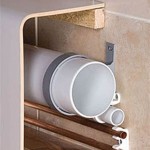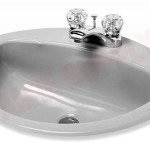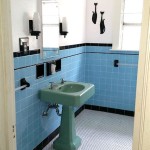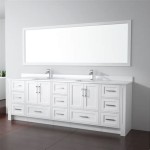Why Am I Finding Ants In My Bathroom?
The presence of ants in a bathroom can be a frustrating and unsettling experience. While ants are often associated with kitchens and food preparation areas, their appearance in the bathroom signals the presence of attractants within that specific environment. Identifying the reasons behind this infestation is crucial for effective eradication and prevention. Multiple factors contribute to ant invasions in bathrooms, requiring a comprehensive understanding of ant behavior and environmental conditions.
Moisture as a Primary Attractant
One of the primary reasons ants are drawn to bathrooms is the presence of moisture. Ants, like all living organisms, require water for survival, and bathrooms often provide readily available sources. Leaky faucets, showerheads, and pipes create humid environments that are highly attractive to ants. These leaks, even if seemingly minor, can provide a continuous source of water, especially in regions prone to drought or high temperatures where outdoor water sources are scarce.
Furthermore, condensation buildup on bathroom surfaces, such as mirrors, tiles, and around toilets, can also contribute to the problem. Inadequate ventilation exacerbates this issue, allowing moisture to linger for extended periods. Areas under sinks and around bathtubs are particularly vulnerable, as these are often dark, humid, and undisturbed, creating ideal conditions for ant colonies to establish themselves. The types of ants that are drawn to this moisture often include species that require high humidity, such as carpenter ants, which can also cause structural damage to wooden components within the bathroom.
The material composition of the bathroom itself can contribute to moisture retention. Porous materials like grout and certain types of tile can absorb and retain water, creating a perpetually damp environment. Over time, this moisture can also lead to mold and mildew growth, which further attracts ants, as some species feed on these substances. Addressing moisture issues is, therefore, a critical first step in eliminating ant infestations in bathrooms.
Food Sources, Even Unconventional Ones
While bathrooms are not typically associated with readily available food sources, ants are resourceful and can exploit even the smallest traces of organic matter. Hair, skin cells, and soap residue accumulate in bathroom drains, under sinks, and in crevices. These materials provide a source of nutrition for certain ant species, attracting them to the area. Spilled toiletries, such as lotions, shampoos, and conditioners, can also serve as food sources, especially if they contain sugars or other appealing ingredients.
The presence of standing water in shower stalls or around sinks can further facilitate the decomposition of organic matter, making it more accessible to ants. Furthermore, the sweet scent of certain bathroom cleaners and air fresheners can attract ants, as they may perceive these fragrances as potential food sources. Even seemingly harmless items like damp towels or washcloths can harbor bacteria and fungi that attract ants.
It is important to note that some ants are attracted to the honeydew produced by aphids and other sap-sucking insects, which can occasionally infest houseplants kept in the bathroom. These ants may be present in the bathroom primarily to access this honeydew, rather than directly seeking out food within the bathroom itself. Identifying and eliminating these unconventional food sources is crucial for long-term ant control.
Entry Points and Nesting Opportunities
Ants can enter bathrooms through a variety of entry points, including cracks in walls, gaps around pipes, and openings around windows and doors. These openings may be small and inconspicuous, but they provide access for ants to explore the environment and establish colonies. Older homes often have more numerous and larger entry points due to natural settling and wear and tear. This can be particularly problematic if the bathroom is located near the exterior of the house or adjacent to areas with high ant populations, such as gardens or landscaping features.
Once inside the bathroom, ants seek out suitable nesting sites. These sites are typically dark, secluded, and protected from the elements. Common nesting locations include wall voids, under sinks, behind toilets, and within plumbing chases. Ant colonies can be quite large, with thousands of individuals, requiring ample space and resources. In some cases, ants may even nest within the walls of the bathroom, accessing the area through cracks and crevices in the drywall.
The proximity of the bathroom to other areas of the house, such as the kitchen or pantry, can also influence ant infestations. Ants may forage for food in these areas and then travel to the bathroom to access water or establish satellite colonies. Sealing entry points and eliminating potential nesting sites are essential for preventing ant infestations in bathrooms. This includes caulking cracks, sealing gaps around pipes, and repairing any damage to walls or floors.
In addition to physical entry points, ants can also be inadvertently brought into the bathroom on items such as potted plants or contaminated materials. Therefore, it is essential to inspect these items carefully before bringing them into the bathroom to prevent the introduction of new ant colonies.
Effective ant control requires a multi-pronged approach that addresses the underlying causes of the infestation. This includes eliminating moisture sources, removing food sources, sealing entry points, and targeting ant colonies directly with appropriate control measures. Neglecting any of these aspects can lead to recurring infestations and ongoing challenges to maintaining a pest-free bathroom environment.
Identifying the specific type of ant infesting the bathroom is also important for selecting the most effective control methods. Different ant species have different behaviors and preferences, and what works for one species may not work for another. Consulting with a professional pest control service can help to accurately identify the ant species and recommend the most appropriate treatment strategies.
Preventive measures are also crucial for long-term ant control. Regular cleaning, proper ventilation, and diligent maintenance can help to create an environment that is less attractive to ants. This includes wiping up spills promptly, keeping drains clean, and repairing any leaks or water damage. By taking these steps, homeowners can significantly reduce the risk of ant infestations in their bathrooms and maintain a healthy and hygienic living environment.
The use of certain insecticides and baits can also be effective in controlling ant populations. However, it is important to use these products safely and according to the manufacturer's instructions. In particular, it is important to keep these products out of reach of children and pets, and to avoid contaminating food preparation areas. In some cases, natural or organic pest control methods may be preferred, especially in households with young children or individuals with sensitivities to chemicals.
Ultimately, addressing the question of why ants are found in a bathroom involves a thorough assessment of the environment, identification of the contributing factors, and implementation of comprehensive control and prevention strategies. By understanding the behavior and needs of ants, homeowners can take proactive steps to create an inhospitable environment and keep these unwanted pests at bay.

How To Stop Ants From Invading Your Bathroom Identification And Prevention Tips Tabor Pest Control

Niagara Pest Control Why Are There Carpenter Ants In The Bathroom

Boise Idaho Pest Control Pestcom

Why Do I Have Ants In My Bathroom

Nj Pest Control Pros Say It S Common To Find Ants In The Bathroom

Ants In The Bathroom Get Rid Of Them With Bulwark Pest Control

Keeping Ants Out Of Your Bathroom Extermpro

Why Tiny Ants Have Invaded Your House And What To Do About It

How To Get Rid Of Ants In The Bathroom Atkinson Inspection Services

Boise Idaho Pest Control Pestcom
Related Posts







